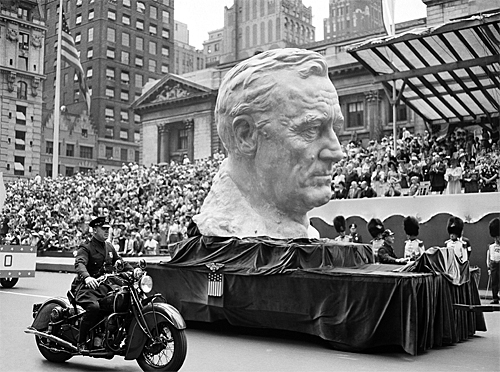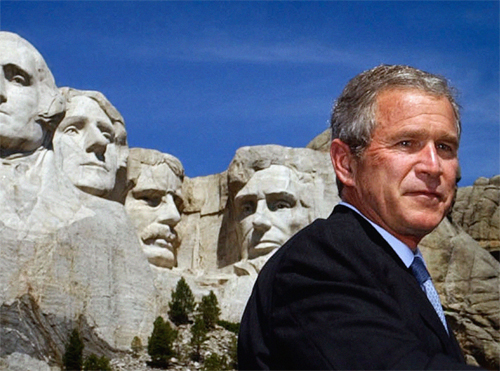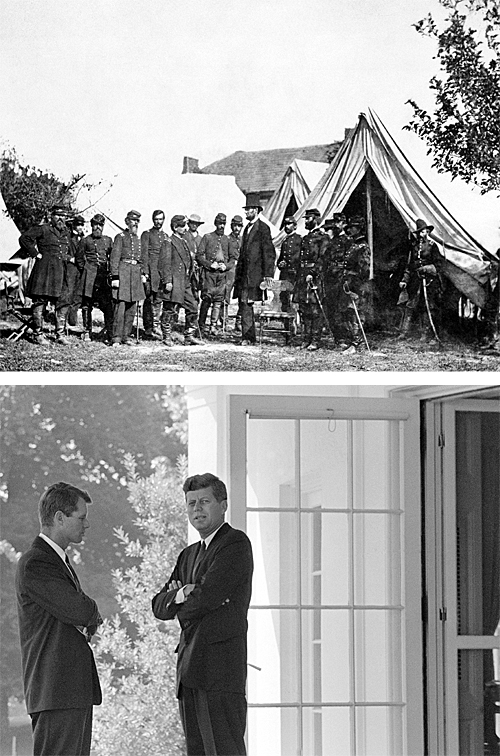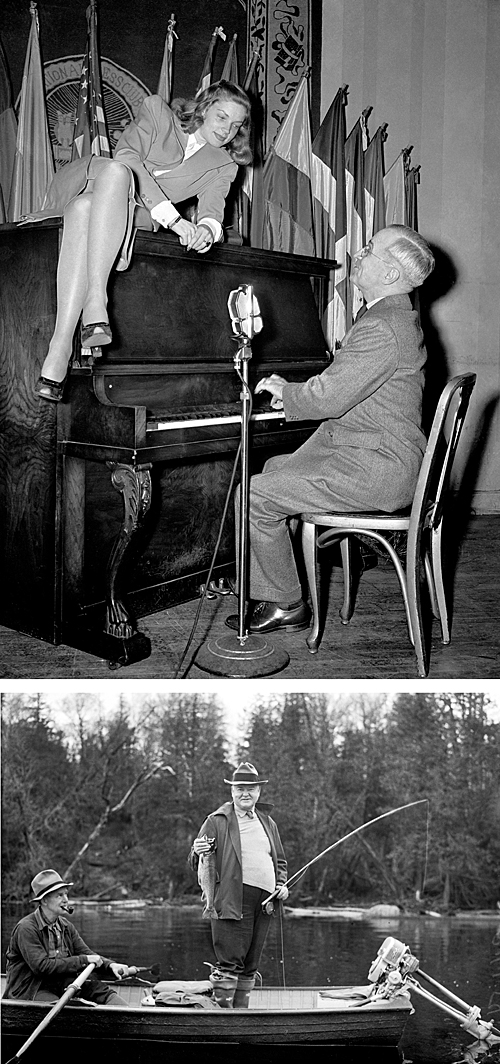Berkeleyan
To preserve, protect, defend, and hang out
Presidents keeping busy are the focus of this photo exhibit
![]()
| 27 August 2008
Like the art of photography itself, presidential image-making has come a long way since the days of the first formal, daguerreotype portraits of William Henry Harrison. Nowhere is the form on better display than in The American President, a collection of black-and-white and color images of U.S. presidents, future presidents, and former presidents along with the odd would-be president taken by Associated Press photographers over the past century and a half. Selections from the traveling exhibit are on display at the Graduate School of Journalism throughout this election season.
The exhibit includes photos of presidents from the Civil War to the New Deal and on to the present day. It shows presidents during political campaigns and during wartime, enmeshed in governmental crises and personal scandals. Some are on their way to the White House; others are back in private life, such as it was.
The gallery will be on view at North Gate Hall from 8 a.m. to 5 p.m. weekdays through Inauguration Day (Jan. 20, 2009). In conjunction with the exhibit, a panel discussion will feature former AP White House correspondents Rita Beamish and Scott Lindaw, a former Washington, D.C., news editor for AP, and senior AP White House photographer Ron Edmonds. It is scheduled for 6:30 p.m. on Wednesday, Sept. 10, in Sibley Auditorium.
Below, we explore resonances among and between pairs of presidential photos, selected from the array of images now on exhibit at North Gate Hall.
|
|
|
 Inspiration NEW YORK CITY/June 1942 (AP) Six months after the Japanese attack on Pearl Harbor, a float carrying a massive bust of President Franklin Roosevelt rolls up Fifth Avenue in New York City during a Flag Day-themed war parade. FDR would die in office almost three years later, less than a month before the fall of Nazi Germany and four months before the Japanese surrendered, bringing World War II to an end. |
 Aspiration? KEYSTONE, S.D./August 2OO2 (Ken Lambert/AP) In a bit of image-management either inspirational or ironic, self-described “war president” George W. Bush is seen here at the base of Mount Rushmore National Memorial in between the U.S. invasions of Afghanistan (October 2001) and Iraq (March 2003). The monument was the site for a Bush speech on homeland security and the budget. |




